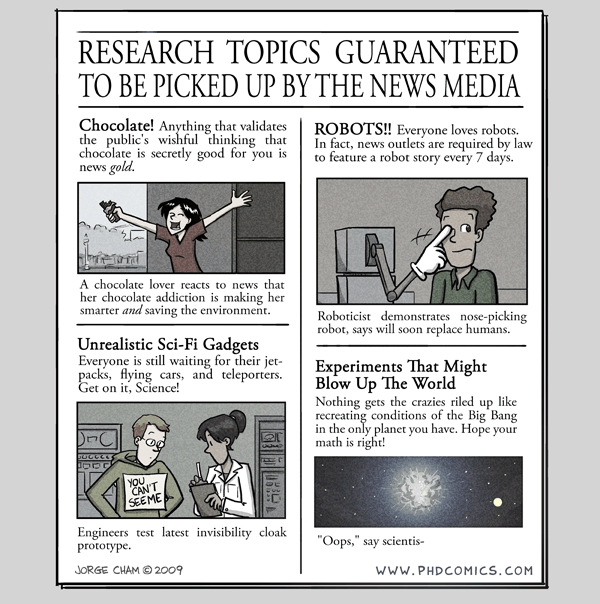For years, genes have been considered the one and only way biological traits could be passed down through generations of organisms.
Not anymore.
Increasingly, biologists are finding that non-genetic variation acquired during the life of an organism can sometimes be passed on to offspring—a phenomenon known as epigenetic inheritance. An article to be published this week in The Quarterly Review of Biology lists over 100 well-documented cases of epigenetic inheritance between generations of organisms, and suggests that non-DNA inheritance happens much more often than scientists previously thought.
Biologists have suspected for years that some kind of epigenetic inheritance occurs at the cellular level. The different kinds of cells in our bodies provide an example. Skin cells and brain cells have different forms and functions, despite having exactly the same DNA. There must be mechanisms—other than DNA—that make sure skin cells stay skin cells when they divide.
Only recently, however, have researchers begun to find molecular evidence of non-DNA inheritance between organisms as well as between cells. The main question now is: How often does it happen?
“The analysis of these data shows that epigenetic inheritance is ubiquitous …,†write Eva Jablonka and Gal Raz, both of Tel-Aviv University in Israel. Their article outlines inherited epigenetic variation in bacteria, protists, fungi, plants, and animals.
These findings “represent the tip of a very large iceberg,†the authors say.
For example, Jablonka and Raz cite a study finding that when fruit flies are exposed to certain chemicals, at least 13 generations of their descendants are born with bristly outgrowths on their eyes. Another study found that exposing a pregnant rat to a chemical that alters reproductive hormones leads to generations of sick offspring. Yet another study shows higher rates of heart disease and diabetes in the children and grandchildren of people who were malnourished in adolescence.
In these cases, as well as the rest of the cases Jablonka and Raz cite, the source of the variation in subsequent generations was not DNA. Rather, the new traits were carried on through epigenetic means.
There are four known mechanisms for epigenetic inheritance. According to Jablonka and Raz, the best understood of these is “DNA methylation.†Methyls, small chemical groups within cells, latch on to certain areas along the DNA strand. The methyls serve as a kind of switch that renders genes active or inactive.
By turning genes on and off, methyls can have a profound impact on the form and function of cells and organisms, without changing the underlying DNA. If the normal pattern of methyls is altered—by a chemical agent, for example—that new pattern can be passed to future generations.
The result, as in the case of the pregnant rats, can be dramatic and stick around for generations, despite the fact that underlying DNA remains unchanged.
LAMARCK REVISITED
New evidence for epigenetic inheritance has profound implications for the study of evolution, Jablonka and Raz say.
“Incorporating epigenetic inheritance into evolutionary theory extends the scope of evolutionary thinking and leads to notions of heredity and evolution that incorporate development,†they write.
This is a vindication of sorts for 18th century naturalist Jean Baptiste Lamarck. Lamarck, whose writings on evolution predated Charles Darwin’s, believed that evolution was driven in part by the inheritance of acquired traits. His classic example was the giraffe. Giraffe ancestors, Lamarck surmised, reached with their necks to munch leaves high in trees. The reaching caused their necks to become slightly longer—a trait that was passed on to descendants. Generation after generation inherited slightly longer necks, and the result is what we see in giraffes today.
With the advent of Mendelian genetics and the later discovery of DNA, Lamarck’s ideas fell out of favor entirely. Research on epigenetics, while yet to uncover anything as dramatic as Lamarck’s giraffes, does suggest that acquired traits can be heritable, and that Lamarck was not so wrong after all.
Eva Jablonka and Gal Raz, “Transgenerational Epigenetic Inheritance: Prevalence, Mechanisms, and Implications for the Study of Heredity and Evolution,†The Quarterly Review of Biology, June 2009.
 Various bloggers on my must-read list have weighed in on the latest issue of Evolution: Education and Outreach, which focuses on transitional fossils (guest editor, Don Prothero). It is great to see the articles being discussed and recommended. A couple of minor responses to the apt comments (not criticisms per se, or at least mostly constructive ones).
Various bloggers on my must-read list have weighed in on the latest issue of Evolution: Education and Outreach, which focuses on transitional fossils (guest editor, Don Prothero). It is great to see the articles being discussed and recommended. A couple of minor responses to the apt comments (not criticisms per se, or at least mostly constructive ones).





